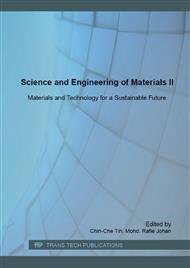p.73
p.77
p.83
p.89
p.97
p.101
p.107
p.112
p.117
Laser Recovery of Subsurface Damages in Chemomechanically Polished Silicon Wafers
Abstract:
Silicon wafers are the most widely used semiconductor substrates. It has been considered that silicon wafers after chemomechanical polishing (CMP) have no subsurface defects. However, in fact, defects such as dislocation and latent microcracks will remain in the wafers if CMP is performed under unsuitable conditions. In this study, we confirmed the existence of subsurface damages at a depth of submicron level in a silicon wafer after CMP, then used a nanosecond pulsed Nd:YAG laser to repair the subsurface damages. It was found that subsurface defects were recovered to a single crystalline structure by laser irradiation without changing the surface topography. The phase transformation of silicon before and after laser irradiation was confirmed by laser Raman spectroscopy and chemical etching using saturated aqueous solution of Ca(OH)2. The findings from this study contributes to improve the quality of silicon wafers for high-performance semiconductors.
Info:
Periodical:
Pages:
97-100
Citation:
Online since:
July 2016
Authors:
Price:
Сopyright:
© 2016 Trans Tech Publications Ltd. All Rights Reserved
Share:
Citation:


